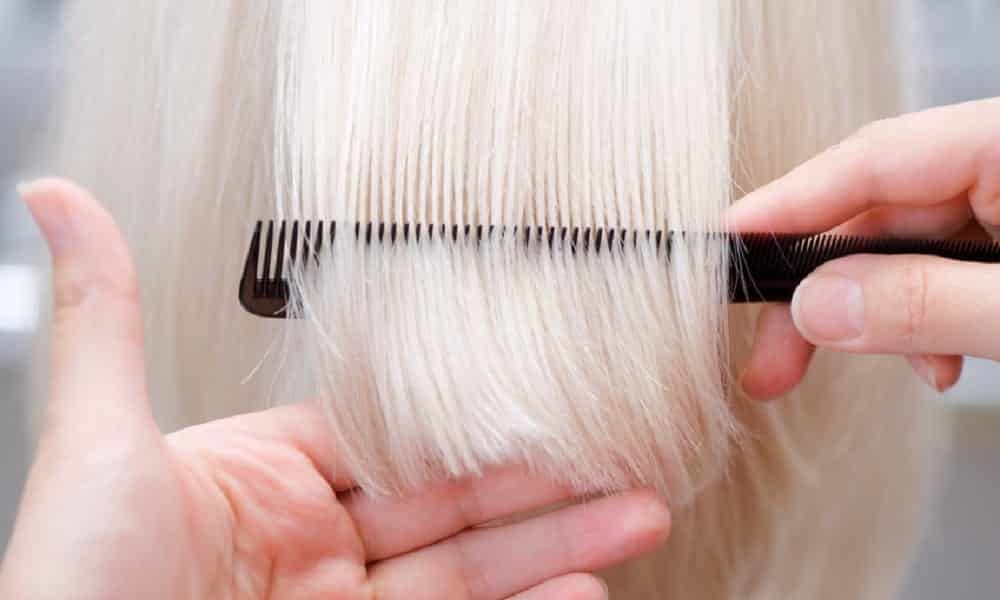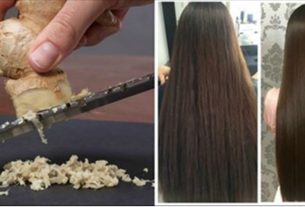Hair Mass Replacement: When It’s Necessary and How to Replace It—A Complete Guide
When it comes to hair health, one of the most common concerns people have is the loss of hair volume. Whether it’s due to aging, stress, or other factors, losing hair mass can feel like a blow to your self-esteem. As someone who has experienced my fair share of thinning hair, I understand the frustration and confusion that come with this issue. You may find yourself asking, “Is hair mass replacement necessary? How do I go about it?”
In this comprehensive guide, I’m going to walk you through everything you need to know about hair mass replacement. I’ll cover when it becomes necessary, the reasons behind hair loss, and the most effective ways to restore the fullness of your hair. Whether you’re dealing with thinning hair, hair loss, or simply want to boost your hair’s volume, this article will help you understand your options and how to take action.
What is Hair Mass?
Before we dive into the topic of hair mass replacement, it’s important to understand what “hair mass” refers to. Simply put, hair mass is the overall volume and density of your hair. It’s not just about how long your hair is, but also how thick and full it appears. Healthy hair mass gives your hair that full, vibrant look, while a lack of mass can make your hair appear flat, limp, or thin.
As we age or face certain lifestyle challenges, our hair mass naturally decreases. This is a normal part of life for many people, but the good news is, there are ways to address this and restore the volume you’ve lost.

Why Does Hair Mass Decrease?
There are several reasons why we may lose hair mass over time. Here are the most common causes:
- Aging
As we get older, our hair follicles slow down in production, leading to finer, thinner hair. This is a completely natural process, but it can feel disheartening. - Genetics
If your family has a history of thinning hair or male/female pattern baldness, you might be genetically predisposed to losing hair mass earlier than others. - Hormonal Imbalances
Hormonal changes, especially during pregnancy, menopause, or thyroid issues, can lead to hair thinning. Hormonal fluctuations are often one of the primary reasons for women experiencing hair loss. - Stress
Physical and emotional stress can take a toll on your body in many ways, including your hair. Conditions like telogen effluvium occur when stress forces a large number of hair follicles to enter the resting phase, leading to shedding and thinning. - Poor Diet
A lack of essential vitamins and nutrients, like iron, vitamin D, and biotin, can weaken hair strands and hinder healthy hair growth. Nutritional deficiencies can significantly affect your hair mass over time. - Over-Processing and Damage
Regular use of hair dyes, heated styling tools, and harsh treatments can lead to hair damage, causing strands to break and reducing overall volume. - Medical Conditions
Certain medical conditions, such as alopecia areata, can result in hair thinning or loss. Autoimmune diseases or scalp infections can also contribute to hair mass depletion.

When is Hair Mass Replacement Necessary?
Hair mass replacement becomes necessary when you start to notice significant changes in the thickness, fullness, and health of your hair. If you’re experiencing noticeable thinning, a receding hairline, or patches of baldness, these could be signs that it’s time to take action.
While minor thinning or occasional shedding is normal, a visible reduction in hair mass can be more concerning. If you notice any of the following, it may be time to consider replacing or restoring your hair mass:
- Excessive hair shedding: If you find clumps of hair in your brush or shower drain, it could be an indication of hair loss.
- Visible thinning patches: If your hairline is receding or you’re noticing bald patches, this could be a sign that you need professional intervention.
- Flat and limp hair: If your hair feels flat and lifeless, even after styling, it might be due to reduced hair mass.
- Broken or split ends: Frequent hair breakage can reduce your overall hair density, making your hair appear thinner.
The good news is, if you notice any of these signs early on, there are a variety of treatments and strategies available to restore your hair mass.

How to Replace Hair Mass: Top Solutions
There are many effective solutions for replacing or restoring hair mass. From professional treatments to at-home remedies, here are some of the most popular options.
1. Hair Transplant Surgery
Hair transplant surgery is a well-known and effective solution for people who experience severe hair loss. During this procedure, hair follicles from a donor area (usually the back or sides of the head) are moved to the thinning or bald areas. Over time, these transplanted hairs grow and help restore hair mass in the affected area.
Pros:
- Permanent results.
- Natural-looking hair restoration.
Cons:
- Expensive.
- Requires recovery time.
If you’re looking for a long-term solution and have the budget for it, hair transplant surgery could be a viable option.
2. Platelet-Rich Plasma (PRP) Therapy
PRP therapy involves drawing your blood, processing it to concentrate the platelets, and then injecting it into your scalp to promote hair growth. This treatment is designed to stimulate dormant hair follicles and improve the thickness and overall mass of your hair.
Pros:
- Non-surgical.
- Stimulates hair growth.
- Relatively low risk.
Cons:
- Results vary.
- Requires multiple sessions.
If you’re looking for a minimally invasive option, PRP therapy could be worth considering.
3. Topical Treatments
Topical treatments like minoxidil (Rogaine) are commonly used to treat hair thinning. These products are applied directly to the scalp and help stimulate hair follicles to grow new hair. Minoxidil is FDA-approved and is often one of the first treatments recommended for people experiencing hair loss.
Pros:
- Easy to use.
- Accessible and affordable.
Cons:
- Results can take time (several months).
- May require lifelong use to maintain results.
If you’re dealing with early stages of thinning or want to try something at home, topical treatments like minoxidil could be a good place to start.
4. Hair Extensions and Wigs
If you’re looking for an immediate solution to restore hair mass, hair extensions or wigs can add instant volume and fullness. These come in a variety of styles and materials, ranging from human hair to synthetic options.
Pros:
- Instant results.
- No need for medical procedures.
Cons:
- Temporary solution.
- May require maintenance and care.
Hair extensions and wigs can be a great choice if you need a quick fix or are not ready for medical treatments.
5. Nutritional Supplements
If your hair mass is thinning due to a nutritional deficiency, taking supplements like biotin, iron, or omega-3 fatty acids can support healthier hair growth. These nutrients are essential for strong, thick hair.
Pros:
- Supports overall health.
- Non-invasive and easy to add to your daily routine.
Cons:
- Results may take time to show.
- Not a quick solution.
Adding the right supplements to your diet may help nourish your hair from the inside out, improving its strength and mass over time.
6. Healthy Lifestyle Habits
One of the most important factors in maintaining hair mass is leading a healthy lifestyle. Ensuring that you get enough sleep, reduce stress, and eat a balanced diet can help maintain your hair’s health. Additionally, using gentle hair care products, avoiding excessive heat styling, and limiting chemical treatments can prevent unnecessary damage.
Pros:
- Improves overall health.
- Non-invasive and sustainable.
Cons:
- Results may take time.
- Requires consistency.
Incorporating these habits into your daily routine is a long-term investment in the health of your hair.
Final Thoughts: Is Hair Mass Replacement Right for You?
If you’re experiencing thinning hair or reduced hair mass, there are numerous options available to help restore fullness and volume. Whether you opt for a professional treatment like PRP therapy or hair transplant surgery, or you choose more accessible options like topical treatments or nutritional supplements, the most important thing is to act early.
The key to success is understanding your specific needs and choosing a solution that fits your budget, lifestyle, and hair goals. With the right approach, you can restore your hair’s volume and regain your confidence.
FAQ
Q1: How long does it take to see results from hair mass replacement treatments?
A1: Results vary depending on the treatment. Hair transplant surgery may take several months to show visible results, while treatments like minoxidil can take about 3-6 months to show improvement.
Q2: Are there any risks associated with hair transplant surgery?
A2: While hair transplants are generally safe, there are some risks involved, including infection, scarring, and the possibility of not achieving the desired result. It’s important to consult with a qualified professional before undergoing the procedure.
Q3: Can a healthy diet really improve my hair mass?
A3: Yes! A balanced diet rich in vitamins and minerals like biotin, iron, and vitamin D can significantly improve hair health, preventing thinning and promoting stronger, fuller hair.
Q4: Are hair extensions a permanent solution for hair loss?
A4: No, hair extensions are a temporary solution. They add volume and length but do not address the root cause of hair loss or thinning. They require regular maintenance and can cause damage if not applied or cared for properly.
Q5: Can stress cause permanent hair loss?
A5: Stress can lead to temporary hair loss, but it usually does not cause permanent damage. However, chronic stress may exacerbate hair thinning over time, so it’s important to manage stress effectively.
Whether you choose to tackle your hair mass concerns with professional treatments or more accessible options, the key is to take action early. With the right approach and a little patience, you can restore your hair’s natural volume and regain that confident, full head of hair!

Sign up for our newsletter and stay up to date with exclusive news
that can transform your routine!
Warning: Undefined array key "title" in /home/storelat/public_html/wp-content/plugins/link-whisper-premium/templates/frontend/related-posts.php on line 12
Warning: Undefined array key "title_tag" in /home/storelat/public_html/wp-content/plugins/link-whisper-premium/templates/frontend/related-posts.php on line 13




